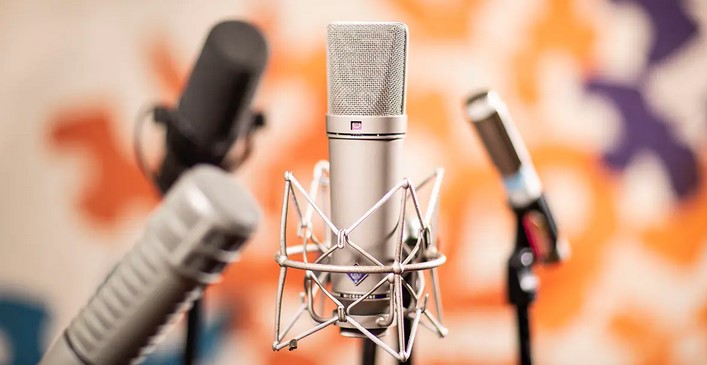
Studio Microphones: Your Guide to Professional Audio Recording is a comprehensive resource that provides in-depth knowledge about professional audio recording. It covers various aspects of studio microphones, including their types, features, uses, and how they contribute to the quality of sound production. This guide is designed to help both beginners and professionals in the audio recording industry understand the importance of choosing the right microphone for different recording situations. It also offers tips and techniques on how to use these microphones to achieve the best possible sound quality.
Mastering Studio Microphones: Your Ultimate Guide to Professional Audio Recording
Studio microphones are the heart of any professional audio recording setup. They are the primary tools that capture and translate sound into an electrical signal, which is then processed and reproduced for listeners. Understanding the intricacies of studio microphones can significantly enhance the quality of your audio recordings, whether you’re a seasoned professional or a budding enthusiast.
The first step in mastering studio microphones is understanding the different types available and their specific uses. Dynamic microphones, for instance, are robust and versatile, making them ideal for live performances and recording loud instruments. They work via a coil that moves within a magnetic field, producing a signal. On the other hand, condenser microphones are more sensitive and accurate, making them perfect for capturing vocals and high-frequency instruments in a studio setting. They operate using a capacitor to convert acoustic energy into electrical energy.
Another type of studio microphone is the ribbon microphone, known for its ability to capture sound with a vintage warmth and smoothness. Ribbon microphones are delicate and best used in controlled studio environments. They work by a thin metal ribbon suspended in a magnetic field, vibrating to create a signal. Each of these microphones has its strengths and weaknesses, and the choice depends on the specific requirements of your recording project.
Once you’ve chosen the right type of microphone, positioning it correctly is crucial. The placement of the microphone can dramatically affect the sound quality. For instance, placing a microphone too close to a sound source can result in a bass boost effect, known as the proximity effect. Conversely, placing it too far away can make the sound seem distant and hollow. It’s essential to experiment with different positions to find the sweet spot that captures the best sound.
In addition to positioning, understanding the polar patterns of your microphone is vital. Polar patterns refer to the sensitivity of the microphone to sound coming from different directions. The most common patterns are cardioid, omnidirectional, and figure-8. Cardioid microphones pick up sound from the front and reject sound from the back, making them ideal for isolating a sound source. Omnidirectional microphones pick up sound equally from all directions, while figure-8 microphones pick up sound from the front and back but reject it from the sides.
Lastly, it’s important to consider the acoustic environment in which you’re recording. Even the best studio microphone can’t compensate for a poor recording environment. Hard surfaces can cause sound reflections, leading to echo and reverb that can muddy your recording. Using acoustic treatment like foam panels can help control these reflections and create a cleaner sound.
In conclusion, mastering studio microphones involves understanding the different types of microphones, their positioning, polar patterns, and the acoustic environment. By investing time in learning these aspects, you can significantly enhance the quality of your audio recordings. Remember, the best microphone is not necessarily the most expensive one, but the one that best suits your specific needs and environment. With the right knowledge and practice, you can turn your recording sessions into a professional audio experience.In conclusion, studio microphones are essential tools for professional audio recording. They come in various types, each with unique features and specifications designed for different recording situations. Understanding their characteristics, usage, and the technology behind them can significantly enhance the quality of audio production. Therefore, a comprehensive guide is crucial to make an informed decision when choosing the right studio microphone for specific recording needs.
